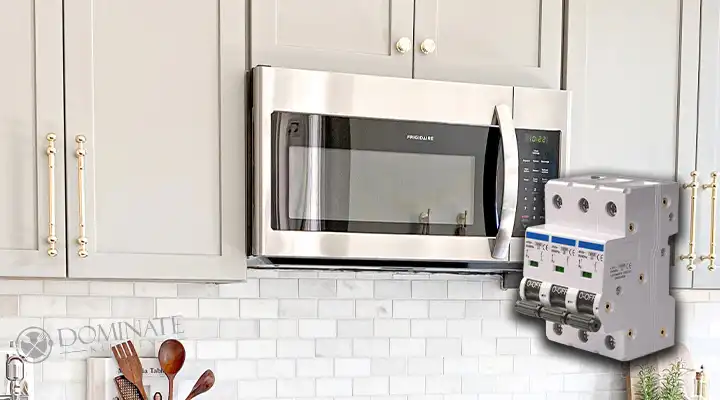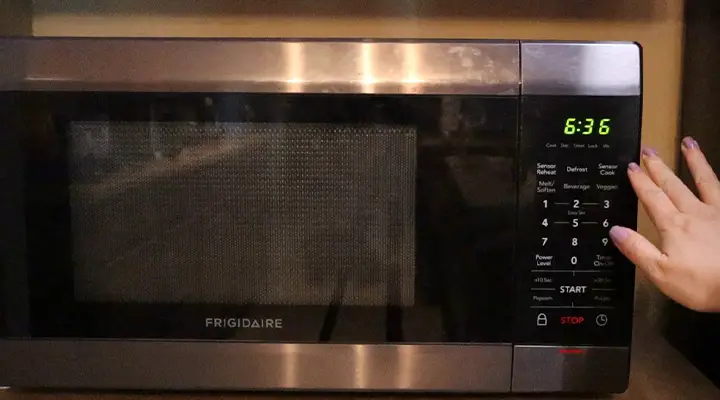What Size Breaker For Oven (30,40,50,60 Amp Breakers)
Do you intend to install an oven in your home in the near future? Do you know what size breaker you will need for the oven? Make sure you know the right breaker size for your range before you install an electric oven. Because, a breaker ensures the safety of the oven, keeping the electricity flow regular.

In order to determine the right breaker size, you’ll need to know the microwave’s capacity and amp requirements. If you can’t identify the exact amp requirement for your electric oven, you may install the wrong breaker. So, read on more to know about the crucial factors for choosing the oven breaker size.
Breaker Sizes For Oven
If you think about the industry standard for the current oven breaker, it is a 50 amp version. But, when you have a giant oven or an advanced one that comes with many extra features, the breaker size will be bigger. Because a more powerful oven can draw greater amps to run its processes. In fact, the breaker size varies on different amp ranges as well as the wire sizes. So, find the suitable breaker size for your oven below.
30 Amp Breaker
You should know that the breaker size denotes the amp range of the breaker. And, to find the required amp for your oven, you need to check your oven manual or the body to get the necessary information. Usually, you can find the wattage, voltage, and ampere level from the attached label to the oven. If you see that the oven is labeled as 30 amp, you need a 30 amp breaker for your oven.
The required wire size for your 30 amp electric oven breaker is ten gauges for copper wire and eight gauges for aluminum wire. Here, the wire size is important because the current flow won’t be free enough in case of a wrong-sized wire. And, the breaker won’t respond appropriately. So, attach the required wire size to your 30 amp oven with the 30 amp breaker.
40 Amp Breaker
If your oven is labeled as 40 amp, you need a 40 amp breaker. Usually, 30 amp and 40 amp ovens are old models for electric ovens. That’s why the size of the wire is also larger here. The old electric ovens cannot handle more than 40 amp of electricity flow, and the risk of getting imbalanced flow is comparatively higher.
In that case, you need an eight gauge wire for copper wiring and a six gauge for aluminum wiring. If you want to avoid the mess of extra cables, go for the aluminum wires. Because fewer aluminum wires can deliver the same electricity for a specific copper wire size.
50 Amp Breaker
A 50 amp breaker is the standard size for most electric ovens. Because, this current flow is the perfect range for running any electric appliance at maximum power. Though some appliances require more current flow, the regular size is always 50 amp. So, when your oven label shows the capacity as 50 amp, get a 50 amp breaker to set for your microwave oven.
Despite being a better version than the 40 amp ovens, the 50 amp ovens need the same wire size for the breaker. That means you can go for eight gauge copper wire or six gauge aluminum wire. However, excluding the wire size, the 50 amp ovens perform a lot better and flow current at a high rate.
60 Amp Breaker
This breaker is suitable for heavy current flow. Therefore, you should use it only if your oven has more than 50 amp of current flow. Though using a 60 amp breaker for a 55 amp oven is possible, we recommend using a same-size breaker or a lower-size breaker for a cooker. Because, the overflow of the current can be stopped effectively in that way.
In the case of a 60 amp breaker, you need six gauge copper wire or four gauge aluminum wire to attach to the oven. This wire size is much smaller than the old ovens. Here, the ratio between the breaker size and the wire size works in the opposite direction. That means, you need more wire for a smaller breaker. However, the current ovens don’t usually come with higher than 60 amp. Though you may find some, these are not widely used. For such an oven, buy a breaker matched with the oven’s amp capacity.
Frequently Asked Questions
Can I Use A 60 Amp Breaker For A Stove?
To answer this, we need to know the amp capacity of your electric stove. If your stove has a power of 55 to 65 amp, you can use a 60 amp breaker. And, the cable size will be four gauges for aluminum wire and six gauges for copper wire. If your stove has an amp capacity that doesn’t fall within this range, you can’t use a 60 amp breaker on it.
Can I Use A 50 Amp Breaker For A 30 Amp Oven?
No, you can’t. Because, the 50 amp breaker won’t suit a 30 amp oven. Basically, we use circuit breakers to avoid current overflow or short circuits. If the amp size is larger than the oven capacity, the breaker won’t be able to identify the problem with the current flow. As a result, there will be no use for that oversized amp breaker. So, you should use an amp breaker of the same size as the electric oven capacity.
What Appliances Need A 30 Amp Breaker?
Any appliance with a 30 amp current flow capacity can be added with a 30 amp breaker. There is no specific category for selecting the appliance, and it can be either oven or stove, or any other appliance. All you need to do is to check the label of the appliance. If it supports 30 amp capacity, you need a 30 amp breaker for that appliance.
Is There A Circuit Breaker For Oven?
An oven is a cooking appliance that needs a heavy current flow to run. And, you know that a circuit breaker is required for an electric device with a heavy current flow. In that case, there is always a circuit breaker for a specific electric oven. The size of the circuit breaker depends on the capacity of the range. However, selecting a circuit breaker for your oven is always better for safety purposes.
Wrapping Up
On the whole, we can say that you should choose a breaker size according to the amp capacity of your electric oven. If your oven is of 50 amp capacity, you should select a 50 amp breaker for it. Not to mention, you can use a slightly lower-sized amp breaker than your oven capacity. But, we strongly recommend not to use a 10 amp higher breaker size for the oven. Using such breakers can never give you safety for current overload.






